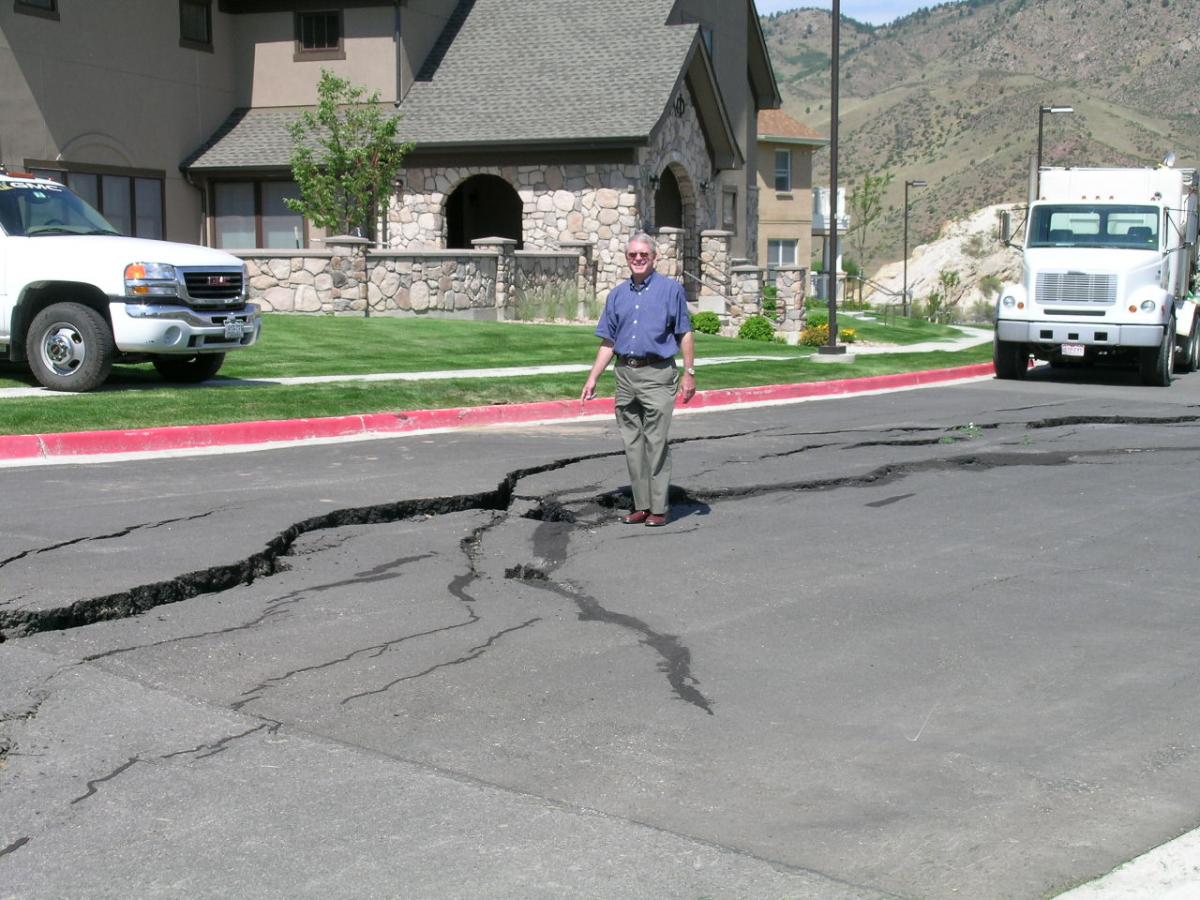Table of Contents
Erosion is the removal and simultaneous transportation of earth materials from one location to another by water, wind, waves, or moving ice. Deposition is the placing of the eroded material in a new location. All material that is eroded is later deposited in another location (Colorado Natural Hazards Mitigation Plan, 2013, p. 3-166). In Colorado, erosion and deposition are typically initiated by water or wind.
- Riverine erosion and deposition is the process whereby river beds, banks, and floodplains are shaped by the force of moving water as it mobilizes, transports, and deposits sediments and organic debris. This process is best described as a river’s tendency for constant course alteration, shape and depth change, and the balancing act between the water’s sediment transport capacity and its sediment supply. Swiftly moving floodwaters cause rapid local erosion as the water carries away earth materials. Deposition occurs where flood waters slow down, pool or lose energy in other ways, and materials settle out. See Fluvial Hazards for more information related to the hazards associated with these natural processes.
- Wind erosion occurs when wind is responsible for land removal, movement, and deposition and most commonly occurs in exposed areas such as fields, tailings, and deserts. Another factor that controls the amount of erosion is the ease with which material can be dislodged and transported. Hard granites erode very slowly while soft silts and sands erode very quickly.
Erosion and deposition are occurring continually at varying rates all over Colorado. Point sources of erosion are common to construction sites or other areas where human interaction with the earth results in exposed soil or removal of vegetation, and natural waterways perpetually remove and carry soil from the earth to locations downstream.
Many other hazards and naturally occurring events are related to erosion and deposition. The natural flow of rivers and streams causes minor erosion and deposition, but flood events create accelerated and more dramatic erosion and deposition rates. For example, the deposition of material can block culverts or impede other engineered and natural conveyances which further aggravate flood conditions. Channel migration resulting from flooding can introduce hazard risk into new areas. Similarly, windstorm events rapidly increase the erosion and deposition of soft silts and sands in exposed areas. Landslides, mud/debris flows, and rockfalls may exacerbate the problems associated with erosion and deposition by making more material available and potentially increasing the rates of each process. Erosion and deposition issues are also exacerbated in wildfire burn areas. See Fluvial Hazards for more information about identifying where these hazards may occur in Colorado.
Expansive soils and subsidence are generally influenced by how wet or dry those types of soils become, so the climate of an area, and more specifically the seasonal precipitation/drought cycle associated with arid or semi-arid regions such as Colorado, heavily influences the occurrence and severity of these hazards.
Colorado Geological Survey
The Colorado Geological Survey is the primary source of soil hazard data specific to Colorado communities. Hazard-specific pages exist for the following hazards:
- Collapsible Soils (includes online viewer)
- Subsidence - Natural and Mines
- Expansive Soild and Rock

